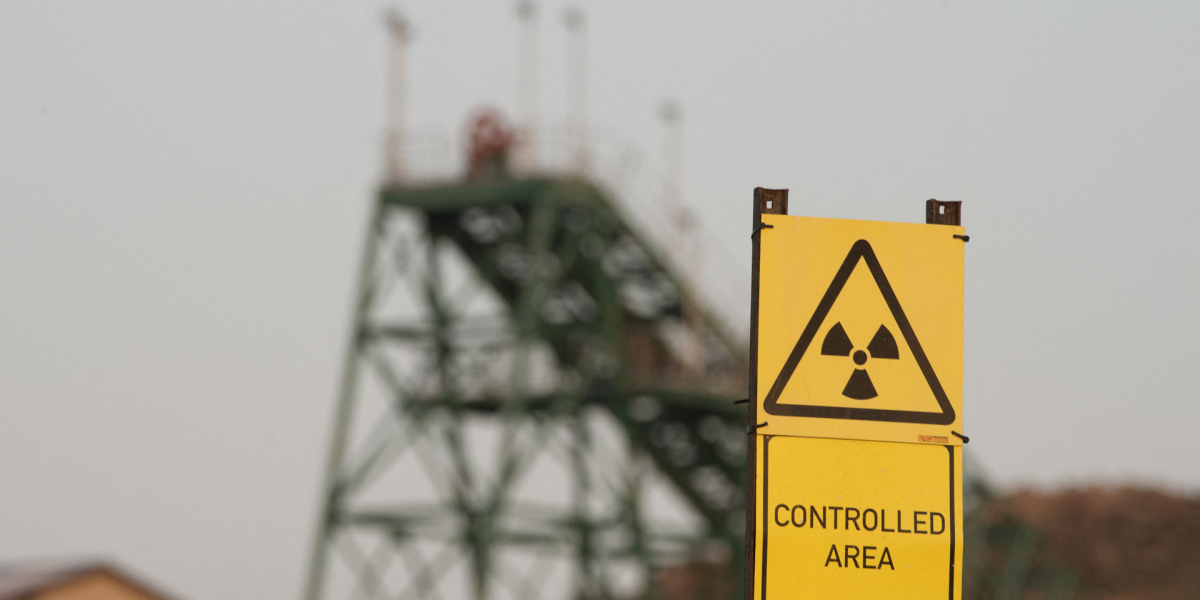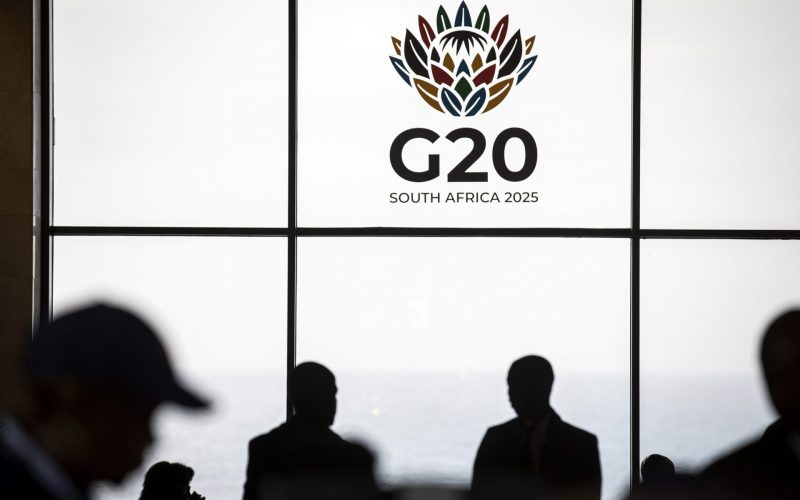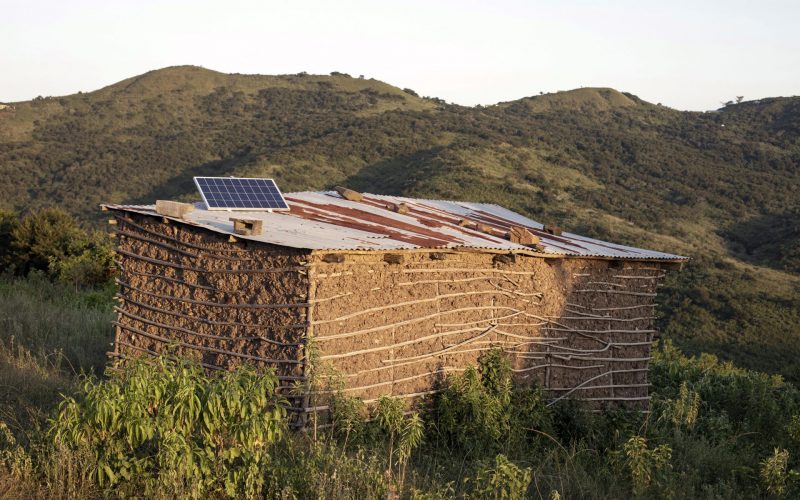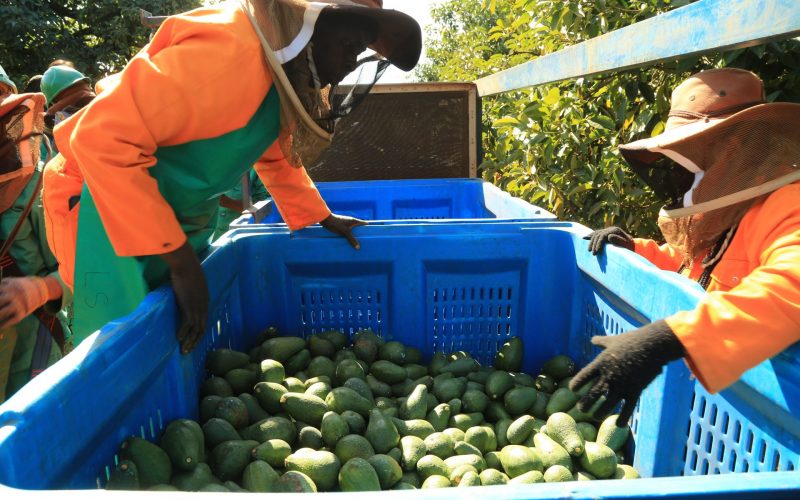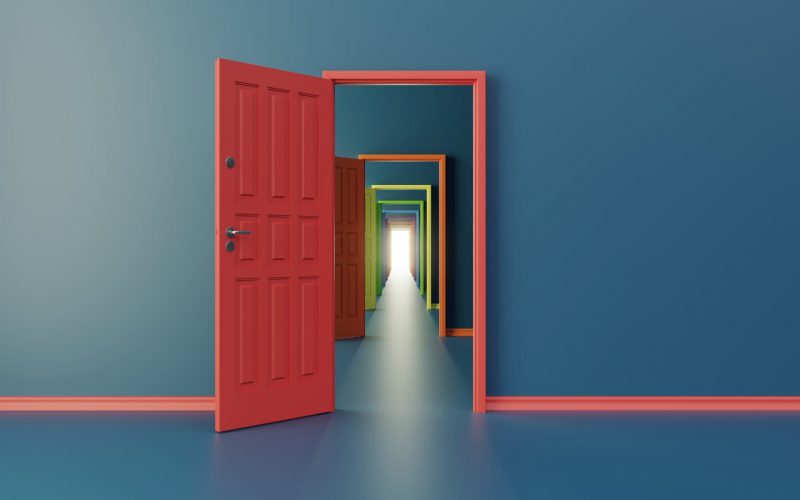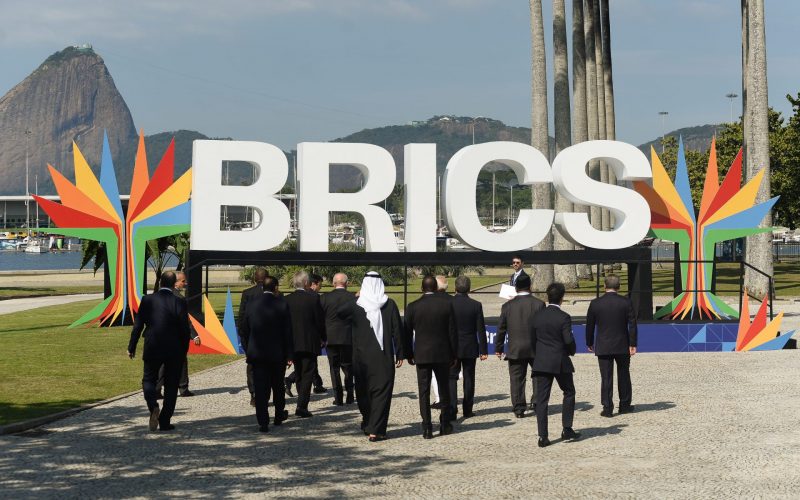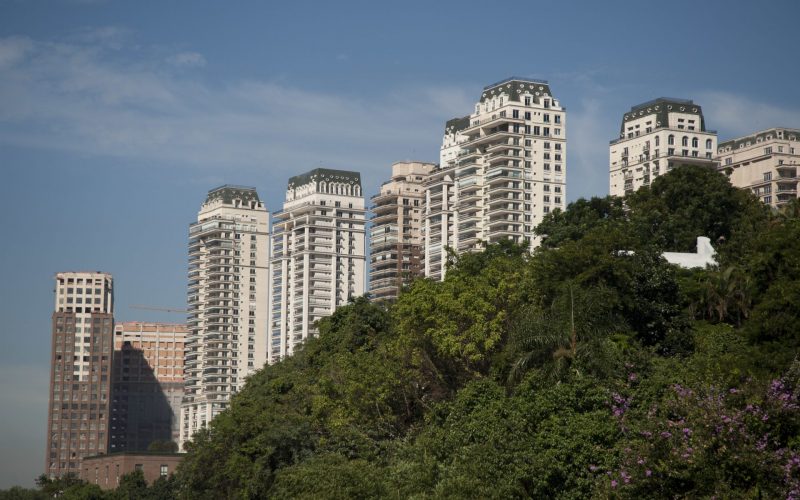Despite the unsettling reception that US President Donald Trump gave the South African delegation – and President Cyril Ramaphosa in particular – in Washington DC in May this year, dialogue channels on the future of trade cooperation between South Africa and the US remain open. The US president has made no secret of the fact that he is still interested in economic cooperation with South Africa, and that he has a particular interest in minerals and metals. On critical minerals, Trump’s tactic strongly resembles his approach to Ukraine, and South Africa has included minerals in its negotiation offering to the US. In terms of tactics, Trump tends to use public staging to manoeuvre his trading partners into a defensive positioning to get what he wants, as demonstrated by the finalisation of the minerals deal with Ukraine.
In response to this kind of diplomacy, South Africa should look at alternative partners, with one option being to deepen strategic interdependence with the EU. More specifically, stronger raw materials cooperation could be a mutually beneficial situation for both actors. As a bloc, the EU is South Africa’s largest trading partner, with the former accounting for 19% of exports in 2024, valued at $21 billion. The EU also accounted for 23.5% of South African imports in 2024, totalling $25 billion. On the investment front, the EU accounts for more than 50% of foreign direct investment in South Africa in 2024. This translates to over 2 000 companies operating in South Africa, creating 500 000 direct and indirect jobs in the mining, manufacturing, finance and energy sectors. On the tariff front, more than 98% of trade tariffs between the EU and South Africa have been eliminated through the EU–SADC Economic Partnership Agreement.
Although the two actors have diverging perspectives on certain key geopolitical challenges, such as the conflict between Russia and Ukraine and Israel’s activities in Gaza, these disagreements have not harmed their diplomatic or trade relationships. In fact, in the past few years, the relationship has been characterised by mutual respect and intensifying engagement. In addition, the EU and South Africa share a common challenge in having to navigate their relationships with the current US administration, whose actions have injected a great deal of uncertainty into global governance processes, particularly related to trade and security.
The respective minerals-for-security agreements in Ukraine and the Democratic Republic of Congo (DRC) are striking examples of how mineral resource competition has been subsumed in wider geopolitical events. In this context, South Africa and the EU need to cooperate more intensely to sustain their economic relations and deepen their engagements in the field of critical minerals. The EU–South Africa Summit in March 2025 highlighted the pragmatic approach that the two economies have adopted in an increasingly unpredictable geo-economic environment. They have established a relationship that allows them to navigate the geopolitical complexities manifest in the critical minerals space. Neither has allowed the politicisation and securitisation of the critical minerals agenda to drag it into the resultant geopolitical competition between the US and China. Indeed, rather than engaging in the blackmailing logic associated with such mineral agreements, South Africa and the EU should focus instead on deepening genuine partnerships and conversations on the issue of critical minerals.
Leveraging Critical Minerals as Common Ground for Cooperation
South Africa and the EU have complementary interests in the critical minerals space. The two economies already trade in critical minerals, but current levels leave room for improvement in terms of both volume and quality. During the recent EU–South Africa Summit, Brussels pledged $4.7 billion towards South Africa through the Clean Trade and Investment Partnership, which is part of the EU Global Gateway Initiative. This investment is intended to support South Africa’s just energy transition, including the development of the critical minerals and green hydrogen sectors, as highlighted in the final summit declaration. With this financial commitment, the EU reiterated its support for South Africa’s Just Energy Transition Investment Project.
During the Summit, the EU also expressed its support for South Africa’s G20 presidency, including for the development of a framework on clean industrialisation and investment that seeks to lay the foundation for a G20 agreement on critical minerals. The development of this framework is one of the key outcomes sought by South Africa as part of its G20 presidency. During the recent G7 Summit in Canada, which both South Africa and the EU attended, critical minerals cooperation was highlighted through a Critical Minerals Action Plan aimed at stronger cooperation in the minerals sector. It is through such frameworks that the EU and South Africa could deepen cooperation in the critical minerals space.
As part of the EU–South Africa Summit, the countries also supported the opening of negotiations to establish a memorandum of understanding (MoU) on critical minerals. The EU already has raw materials partnerships with several African countries – including Rwanda (2024), Zambia (2023), the DRC (2023) and Namibia (2022) – and cooperates with the AU in the raw materials sector. These MoUs have typically been concluded within the framework of bilateral partnerships and cover five areas of cooperation:
- the integration of mineral value chains and promotion of trade and investment linkages by exploring joint ventures, networking events and the joint identification of bankable projects;
- the mobilisation of EU private and public funds for infrastructure projects;
- the exchange of knowledge and technology;
skills development and capacity building; and - cooperation to enhance the observance of environmental, social and governance (ESG) standards.
Such EU agreements usually also include provisions for establishing a joint roadmap to steer future cooperation on critical minerals and other joint areas of interest such as green hydrogen.
South Africa is well endowed with many critical minerals and is the world’s top producer of platinum group metals, manganese and chromite. Currently, the EU’s most important critical minerals imports from South Africa are iridium (accounting for 92% of its imports of this mineral), platinum (71%), rhodium (80%) and ruthenium (93%). Considering South Africa’s intention to develop regional value chains in the critical minerals sector, the fact that countries such as Zambia, Namibia, Mozambique and Zimbabwe have substantial mineral deposits further strengthens the case for deeper collaboration. For instance, the EU already imports 68% of its cobalt and 36% of its tantalum from the DRC. However, stronger cooperation in this area will require a collective willingness from the EU and South Africa to engage the priorities of the other side.
The fact that both parties have clearly formulated strategies on critical minerals provides a natural starting point for greater cooperation. At the beginning of June this year, the South African government published its Critical Minerals and Metals Strategy, which seeks to update the country’s existing mineral policy frameworks to account for recent developments in the global critical minerals landscape. Two main issues stand out from the strategy, namely the desire for greater security of supply and for value addition in-country. The strategy argues for an industrial policy approach to critical minerals that favours value addition and beneficiation at source over exporting unprocessed mineral ores.
For its part, the EU’s policy priorities on critical minerals include strategic autonomy, security of supply and the development of sustainable supply chains within the bloc, as well as supply chain diversification through external partnerships. In response to growing demand and a need to minimise reliance on China for critical minerals, the EU adopted the Critical Raw Materials Act (CRMA) in May 2024. This is aimed at strengthening the region’s strategic autonomy by reducing mineral dependencies on external suppliers, especially China. The specific objectives of the CRMA are relatively ambitious, as they aim to have the EU’s annual consumption of critical minerals sourced in the following ratios by 2030: 10% locally extracted minerals; 25% recycled minerals; 40% locally processed minerals; and a maximum of 65% of each mineral imported from any single country. Engagements around the CRMA are based on a list of critical raw materials that is updated every three years. The last update, in 2023, identified 34 critical raw materials. In addition, the CRMA focuses on a subset of 17 strategic raw materials that are of high importance for the EU.
Through its flagship critical raw materials policy, the EU intends to strengthen the bloc’s strategic autonomy by identifying mineral projects within its borders, as well as entering strategic partnerships with producer countries outside the bloc through complementary initiatives such as the Global Gateway. In June 2025, the EU adopted the first list of 13 strategic projects on critical minerals located outside the region, including the Zandkopsdrift project in South Africa. This project is managed by Frontier Rare Earths Limited, which plans to produce 17 000 tonnes of rare earth elements (REEs) by 2027. Supporting projects such as this can help the EU diversify its suppliers of REEs, as the bloc is currently highly dependent on China for this particular subset of critical minerals. Accordingly, the selected strategic projects will benefit from coordinated support by the EU Commission, member states and financial institutions in the form of facilitating access to finance and contacts with relevant off-takers.
Challenges of Moving from Negotiation to Implementation
While the deepening of EU–South Africa cooperation on critical minerals should be encouraged, several challenges need to be addressed for this relationship to be successful. These include a lack of private sector engagement; inadequate support for value addition in African countries; concerns around ESG requirements; and questions around transparency and accountability.
Private sector engagement: Related to the question of mutually beneficial mineral partnerships is the question of the role of the private sector in these agreements. While there are clear incentives for cooperation, it is important to recognise that the realisation of such cooperation also requires the willingness of South African and European companies to work together on the development of critical mineral value chains and value creation initiatives. One existing initiative that seeks to address this challenge is the EU-funded AfricaMaVal project. The project aims to develop sustainable partnerships in Africa, ensuring responsible sourcing of mineral resources for the EU while supporting the implementation of ESG standards in partner countries. To further this objective, policymakers from Pretoria and Brussels should create additional platforms to bring together companies from different sectors that rely on access to critical minerals – e.g., the automotive, agricultural and energy sectors – to discuss the interests and feasibility of such initiatives in a timely manner. This will require effort from both government and the private sector. For example, the EU and South Africa could use existing industrial subsidies in their policy frameworks to help firms foster greater cooperation in developing critical minerals supply chains for the mutual benefit of the two economies. The upcoming preparatory meetings for the G20 Summit in November provide an ideal setting to advance this objective, as South Africa has consistently expressed its intent to use its G20 presidency to place Africa’s critical mineral priorities on the G20 agenda.
Value addition: There are also valid concerns about a lack of EU support for value addition in partner countries. While the CRMA has provisions aimed at supporting value addition in producer countries, individual mineral agreements often contain limited specific information on what value addition would mean in practice and how these partnerships are meant to facilitate the development of new mining and refining projects. With regard to the supposedly mutually beneficial nature of these agreements, some commentators have raised concerns about whether initiatives such as the CRMA will genuinely support value addition in third countries. Concern about a lack of policy alignment in terms of value addition in these mineral agreements is also echoed in research by the International Institute for Sustainable Development, which found that
[a] key point of tension is that exporting and consuming countries appear to have opposing interests in terms of promoting and refining and processing: exporting countries have in place policy objectives to maximise value addition domestically while importing countries have policy objectives to try to capture raw minerals to then process themselves …
Simply put, there is a tension between claims to support greater value addition in partner countries and commitments to onshore mineral supply chains in the EU that needs to be addressed.
ESG requirements: Any joint projects would need to consider the potentially negative impacts of mineral extraction on mining-affected communities. South Africa has a business culture compatible with that of the EU, including in the key area of ESG standards. In practice, however, there are inherent difficulties in implementing these standards in the mining sector, posing a threat to the well-being of people and the environment. For the most part, South Africa has sound ESG policies and regulations in place; however, the challenge lies in implementation. This is owing to poor local governance, a lack of coordination between government departments and the absence of strong oversight on mining companies, among others. Government officials and companies should therefore pursue economic approaches that favour the implementation of high ESG standards.
Transparency and accountability: There are growing concerns regarding the lack of transparency and accountability in these mineral agreements. For example, while the EU and sub-Saharan African countries have developed and signed roadmaps to guide the implementation of critical mineral MoUs, these documents remain unavailable to the public. This lack of transparency and accountability is not unique to the EU, as demonstrated in research conducted by the African Policy Research Institute (APRI). The APRI’s mineral agreement-mapping exercise showed that, despite the importance of these MoUs in shaping Africa’s mineral future, there is little transparency and public accessibility around these deals. This makes it difficult to ascertain whether the specific provisions of respective agreements benefit African countries or are simply aimed at replicating historical patterns of exploitative mineral extraction. Even when these agreements are made public, the documents often contain little concrete information, which has led some analysts to refer to them as ‘deals without details’.
Next Steps for Deepening Minerals Cooperation
While deepening bilateral cooperation on critical minerals is a positive sign, the success of such cooperation between the EU and South Africa ultimately depends on how the parties move from negotiation to implementation. In terms of practical next steps, there are a few items the parties must focus on. To this end, they must adapt their own strategies, on the one hand, and work together on implementation, on the other.
Recommendations for the South African Government
Given its comparatively well-developed infrastructure, established mining expertise and abundant mineral and renewable energy resources, the country could position itself as a regional investment destination for the extraction and processing of critical minerals in Southern Africa. However, to take advantage of this window of opportunity, the country would have to address the various structural impediments that have undermined the mining sector’s international competitiveness. This includes addressing the challenges of load-shedding, inefficient rail and port infrastructure and a lack of policy certainty. In this regard, partnerships with actors such as the EU can provide the kind of investment and technical assistance that would help South Africa to capture a share of the growing international demand for diversified sources of critical minerals.
Moreover, South Africa has a well-developed regulatory environment for mining and minerals processing, including ESG standards. Despite the existence of this legislation and standards, various stakeholders such as civil society, mining communities, industry and labour unions have lamented the lack of implementation with regard to existing prescriptions. To this end, the government should hasten efforts to implement these standards, not as mere compliance exercises but as part of intentional efforts to enhance the developmental potential of the mining sector.
Recommendations for the EU
To strengthen its strategic engagement, the EU must sharpen its value proposition and strive to reconcile the expectations of key partners such as South Africa with its own objectives in the critical minerals domain. This requires taking South Africa’s priorities seriously and, through sustained dialogue with the South African government, jointly identifying concrete and mutually beneficial goals for cooperation in the raw materials sector across various industries. A key task for the EU is to identify European companies willing to engage in specific business-to-business partnerships linked to critical raw materials. Such cooperation can only be effective if it is anchored in tangible projects. Equally important is ensuring robust financial support for these initiatives to enhance their feasibility and long-term impact.
In response to South African concerns about insufficient support for local value addition and adherence to ESG standards, the EU could offer targeted assistance. This might include capacity building for standard implementation and support in developing environmentally sustainable technologies – an area in which European firms possess considerable expertise and a strong interest in collaboration.
Recommendations for Joint EU–South Africa Cooperation
To bolster the legitimacy of stronger cooperation in the minerals sector, both parties must ensure greater transparency and inclusion. This means improving the inclusion of relevant stakeholders such as the private sector and civil society in the formation of these mineral agreements. This will allow these prospective partnerships to align with demands for greater value addition, economic diversification and governance of the adverse social and environmental risks associated with new mining projects.
Finally, both parties must use the G20 process to promote greater bilateral and multilateral cooperation on critical minerals. South Africa has placed critical minerals on its G20 agenda with a view to gathering consensus on creating a governance framework. Ramaphosa’s invitation to and participation in the G7 Summit in Canada further cemented the support that the country has in key economies. The issuance of a statement at the G7 Summit around critical minerals signals the presence of a critical mass around South Africa’s envisaged critical minerals governance framework.
In crafting cooperative efforts in critical minerals governance, exploitation and development, the EU and South Africa could draw on their own domestic instruments, as well as global and regional frameworks. These include the UN Principles on Critical Energy Transition Minerals, the EU’s CRMA, the AU’s Green Minerals Strategy, the Minerals Security Partnership Forum and pronouncements from the respective Brazilian, Indian and Indonesian G20 presidencies. Such normative standards should inform investments in critical minerals and the creation of shared value chains between the EU and South Africa. In this way, the two economies could use their converging normative interests in the critical minerals space to take lead roles in pursuing a more coherent and inclusive approach to minerals diplomacy.
In a world of growing geopolitical competition, where reactionary and unilateral approaches to critical minerals diplomacy prevail, it would be wise for the EU and South Africa to focus on using pragmatic diplomacy to build a strong bilateral alliance on critical minerals for the long-term future.
Explore SAIIA’s series on Critical Minerals:
Special Report 1:
Special Report 2:
Special Report 3:
Special Report 4:


